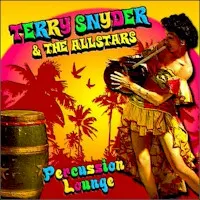
Styles: Saxophone Jazz, Fusion
Year: 2016
File: MP3@320K/s
Time: 63:02
Size: 147,3 MB
Art: Front
(7:14) 1. Shake Loose
(6:24) 2. A Small Plot of Land
(7:52) 3. Beyond Now
(4:52) 4. Coelacanth 1
(8:51) 5. Bright Abyss
(4:05) 6. Faceplant
(8:41) 7. Warszawa
(8:11) 8. Glory
(6:48) 9. Remain
A graduate of the Berklee School of Music, Donny McCaslin (born Donald Paul McCaslin) has had a saxophone in his hands from his earliest years and has integrated the entire range of sounds that a tenor sax can produce into his repertoire: from mainstream modern to funky fusion to laid-back balmy ballads, all flavored with his own experimental style. McCaslin's father originally taught high-school English but favored being a jazz musician, playing the vibraphone and piano in local gigs with young McCaslin in the audience. When he was only 12 years old, McCaslin joined his father's group. By the time he was in high school he had formed his own band, and was selected to play at the Monterey Jazz Festival for three years in a row. During high school he also performed with an eight-piece salsa band, and spent much time at the Kuumbwa Jazz Center, where nationally known jazz artists gathered.
He studied with Paul Contos and Brad Hecht, accomplished members of his father's groups, and was influenced by the likes of John Coltrane, Michael Brecker, and Sonny Stitt. McCaslin's technique and expression allowed him to tour with all-star youth ensembles through Europe and Japan, and won him a full scholarship to Berklee College of Music starting in 1984. His main influences there included Gary Burton, Herb Pomeroy, Billy Pierce, George Garzone, and Joe Viola. During his senior year at Berklee he joined vibraphonist Burton's quintet, and for four years the group toured Europe, Japan, North America, and South America. During 1991, after moving to New York City, McCaslin became a member of Steps Ahead, and played with them for over three years. Michael Brecker, formerly of Steps Ahead, had been one of McCaslin's teenage idols; now McCaslin was replacing him. McCaslin co-wrote two of the compositions that appeared on the group's album Vibe. During those same years McCaslin actively gigged with top jazz artists and groups, such as the Gil Evans Orchestra, George Gruntz Concert Jazz Band, the Danilo Perez Quartet, the Maria Schneider Jazz Orchestra, and Santi Debriano's Panamaniacs, plus he appeared on many recordings.
In 1996 McCaslin was featured with John Medeski (organ), Doug Yates (clarinet), and Uri Caine (piano) in Ken Schaphorst's big-band work "Uprising." Three years later Naxos Records released the piece on Purple, and the jazz media gave McCaslin's solo work rave reviews. During 1997 McCaslin joined with David Binney (alto), Scott Colley (bass), and Kenny Wollesen (drums) to form Lan Xang, an experimental jazz collective that released Mythology. The name Lan Xang symbolizes freedom, the bandmembers' concept of experimental jazz.
In 2000 Lan Xang released Hidden Gardens and they continue to play gigs together, presenting unique forays in group improvisation. In 1998 Naxos released Exile and Discovery, McCaslin's first solo record. Playing with him were Ugonna Okegwo (bass), Bruce Barth (piano), and Billy Drummond (drums).Arabesque Records released 2000's Seen from Above, an album in which McCaslin integrates blues, swing, and fusion, reflecting his skill both as a composer and a soloist.Way Through, released by Arabesque in September 2003, was his third solo album. Donny McCaslin's reputation, technical skills, and artistic gifts are unique, attracting a long list of collaborators with whom he has performed and recorded. The saxophonist's goal is to develop his composing skills and expressive abilities further as a group leader and bandmember in a variety of ensemble settings. ~ Eleanor Ditzel https://itunes.apple.com/us/artist/donny-mccaslin/id4478381#fullText
Personnel: Donny McCaslin (Saxophone); Tim Lefebvre (Bass); Mark Guiliana (Durms); Jason Lindner (Piano).
Beyond Now




















